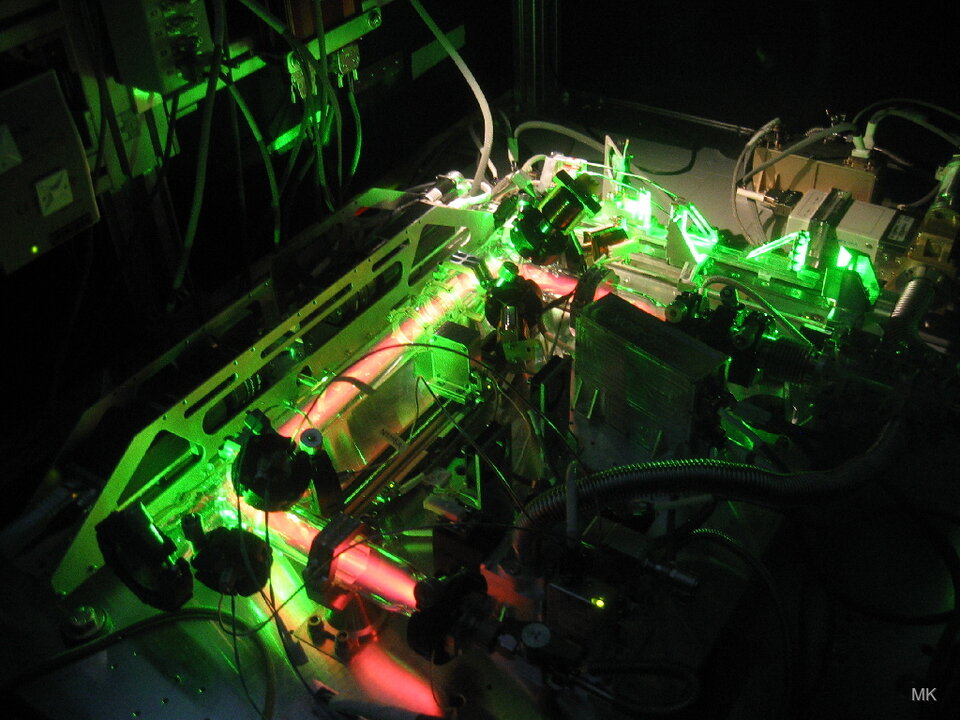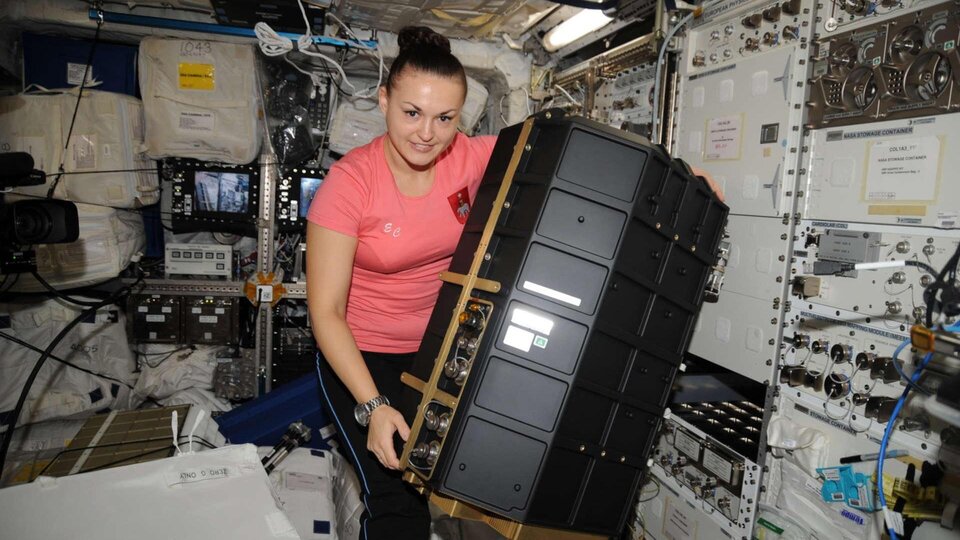3.07.2021

As Europe celebrates 20 years of ESA astronauts on the International Space Station, a Russian-European experiment has been running quietly in the weightless research centre for just as long: the Plasma Kristall (PK) suite of investigations into fundamental science.
Plasma Kristall takes a plasma and injects fine dust particles in weightlessness, turning the dust into highly charged particles that interact with each other, bouncing off each other as their charge causes the particles to attract or repel. Under the right conditions, the dust particles can arrange themselves over time to form organised structures, or plasma crystals.

These interactions and forming of three-dimensional structures resemble the workings of our world on the atomic scale, a world so small that we cannot see move even with an electron microscope. Add a laser to the mix and the dust particles can be seen and recorded for observation by scientists on Earth for a sneak peak of the world beyond our eyes.
These surrogate atoms are a way for researchers to simulate how materials form on an atomic scale, and to test and visualise theories. The experiment cannot be run on Earth because gravity only makes sagging, flattened recreations possible; if you want to see how a crystal is constituted you need to remove the force pulling downwards – gravity.

On 3 March 2001, “PK-3 Plus” was turned on in the Zvezda module, the first physical experiment to run on the Space Station. Led by the German aerospace centre DLR and Russian space agency Roscosmos the experiment was a success and later followed up by a fourth version, installed in 2014 in ESA’s Columbus laboratory, this time as an ESA-Roscosmos collaboration.
Planet conceptions

By changing the parameters in PK-4, such as adjusting voltage or using larger dust particles, the atom doppelgangers can simulate different interactions. Complex phenomena such as phase transitions, for example from gas to liquid, microscopic motions, the onset of turbulence and shear forces are well known in physics, but not fully understood at the atomic level.
Using PK-4, researchers across the world can follow how an object melts, how waves spread in fluids and how currents change at the atomic level.
Around 100 papers have been published based on the Plasma Kristall experiments and the knowledge gained is helping understand how planets form too. At its origin our planet Earth was probably two dust particles that met in space and grew and grew into our world. PK-4 can model these origin moments as they are during the conception of planets.

The huge amount of data that PK-4 creates is so vast it cannot be downloaded through the Space Station’s communication network, so hard disks are physically shipped to space and back with terabytes of information. The experiment is run from Toulouse, France, at the CNES space agency operating centre Cadmos.
Astrid Orr, ESA’s physical sciences coordinator notes “PK-4 is a great example of fundamental science done on the Space Station; through international collaboration and long-term investment we are learning more about the world around us, on the minute scale as well as on the cosmic scale.

“The knowledge from the PK experiments can be directly applied to research on fusion physics – where dust needs to be removed – and the processing of electronic chips, for example in plasma processes in the semiconductor and solar cell industry. In addition, the miniaturisation of the technology required when developing Plasma Kristal is already being applied in plasma-based medical equipment for hospitals.
“The PK experiments address a large range of physical phenomena, so ground-breaking discoveries can happen at any moment.”
Quelle: ESA

